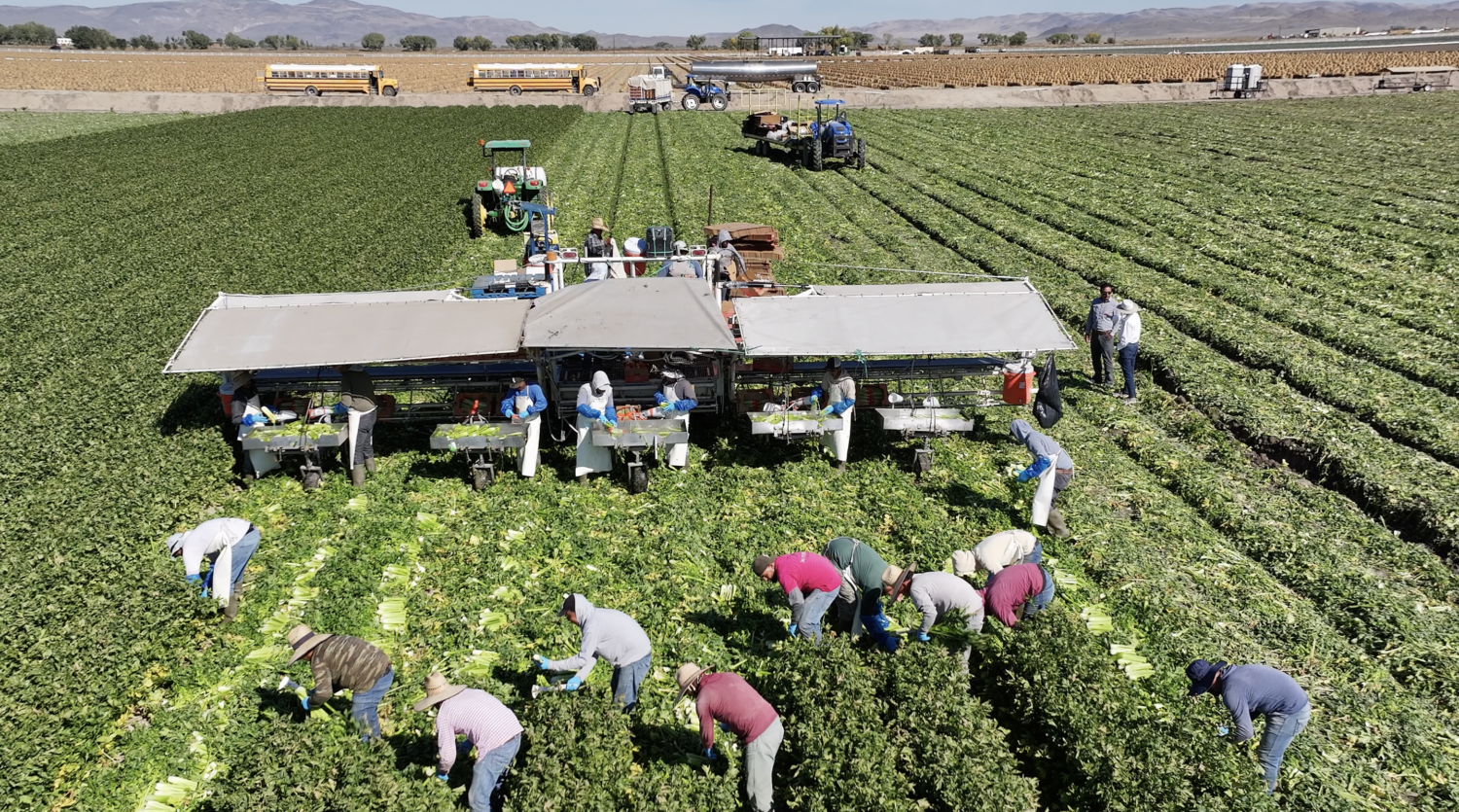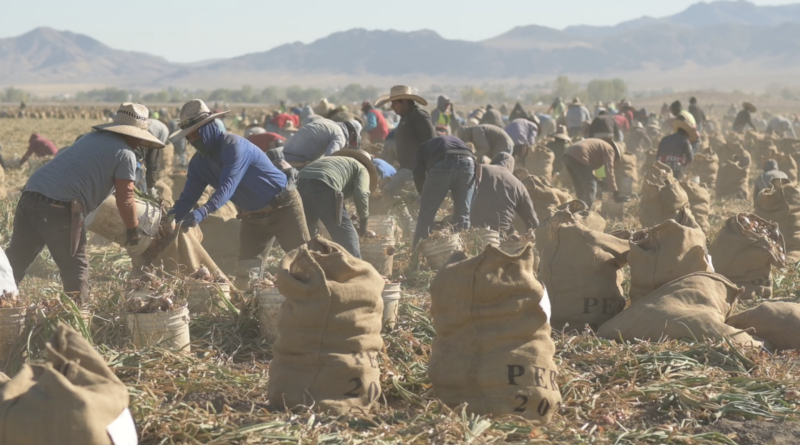
Protecting workers from extreme heat
Latino immigrant workers with H-2A visas harvest celery crops in Nevada, a state home to two of the fastest-warming cities in the United States: Reno and Las Vegas. (Drone photo by Vanesa de la Cruz Pavas)
Every year, an average of 34 workers die from heat exposure in the United States. Laboring in extreme heat conditions is not only dangerous, it is also costly: The value of U.S. labor lost due to the impacts of heat is estimated at $100 billion a year. But creating new worker protections is a challenge, said experts Nov. 8 during the Council for the Advancement of Science Writing’s New Horizons in Science briefing at the ScienceWriters2024 conference in Raleigh, N.C.
Assessing the economic impact of heat-related labor loss could be key to getting robust and clear protections for workers in hot conditions, said Ashley Ward, director of the Heat Policy Innovation Hub at Duke University, during the event.
“This is a sound economic argument to be made,” Ward said. “I wish I could say that loss of life is the number one thing that motivates change, but it is not. We have to make a range of arguments that appeal to a range of people.”
Current federal and state regulations provide limited and inconsistent protections for the outdoor and indoor workers who are most at risk, such as landscapers, construction workers, and factory workers, said Clermont Ripley, co-director of the Workers’ Rights Project at the North Carolina Justice Center.
The Occupational Safety and Health Administration (OSHA) requires employers to maintain a safe and healthy workplace, but it lacks specific rules for mitigating heat exposure.
“If there’s no specific rule or law on the matter, like a law that directly states that when temperatures exceed 90 degrees Fahrenheit, employers must provide shade within two hours, an OSHA department could still take a broader approach,” Ripley said. “They could argue that by not providing proper rest, water, or shade during such extreme conditions, the employer failed to provide a safe and healthy workplace.”
OSHA recently proposed a new rule that requires employers to implement prevention plans, provide cooling measures, ensure proper hydration, and enforce rest breaks.
“The rulemaking process, both at the federal and state level, is incredibly time-consuming and slow, but the work already done shouldn’t be lost if the administration changes,” said Ripley. “Legislation could also be a path forward if there’s enough public support.”

Heat vulnerability is also a matter of climate injustice, said Nezahualcoyotl Xiuhtecutli of the National Sustainable Agriculture Coalition, as the impacts of extreme heat fall disproportionately on marginalized communities. Many Latino immigrant workers, for instance, have high-risk outdoor jobs in agriculture and construction.
Refusing to work in unsafe conditions could jeopardize their jobs, work visas, and ability to stay in the United States. Many of these workers also lack the resources to support a healthy recovery from extreme heat events. For example, some workers have to ration basic services like air conditioning to save money for food or medicine.
“We just have to keep pushing forward,” Xiuhtecutli said. “If enough people get involved and engage with all levels of government, representatives and senators will listen, regardless of the administration. Grassroots support can make a real difference.”